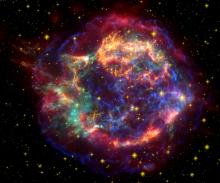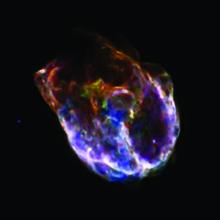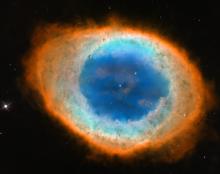Listen to today's episode of StarDate on the web the same day it airs in high-quality streaming audio without any extra ads or announcements. Choose a $8 one-month pass, or listen every day for a year for just $30.
You are here
Stars Old and Young
The Milky Way arches high overhead on December evenings. This hazy band of light outlines the disk of our home galaxy. As night falls, it passes from the Northern Cross, which is in the west, to W-shaped Cassiopeia high in the northeast, and down near the face of Taurus, the bull, in the east.
The Milky Way glows a little more softly at this time of year than it does in summer. We’re looking away from the galaxy’s crowded center and toward the thinly settled edge of its disk. And beyond that is the halo — an extended volume of space that contains some of the galaxy’s oldest stars.
Astronomers classify the stars in the halo as Population II, while most of those in the disk are Population I. The difference isn’t just where the stars reside — it’s what they’re made of.
All stars consist mainly of hydrogen and helium, the two lightest elements, which were created in the Big Bang. But they also have a smattering of heavier elements. Most of these elements were created in the hearts of other stars, then hurled into space as the stars died. Eventually, some of the elements were incorporated into new stars and planets.
Population II stars formed when there were almost no heavier elements around, so they have only tiny amounts of them. But Population I stars — stars like the Sun — are younger, so they have higher proportions of heavy elements. It’s still not much, but it’s enough to set these stars apart from their older kin.
Script by Damond Benningfield





